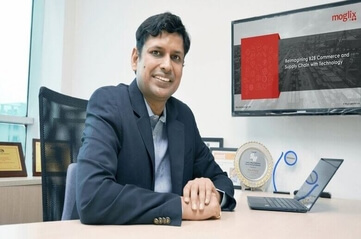Spend Management
What is Spend Management?
In simple terms, spend management is all about controlling the spending of your business. It is the process of accumulating, maintaining, and analyzing the spending data of an organization. The prime motive is to reduce costs, boost efficiency, and manage compliances.
Spend management is a holistic approach process that affects multiple functions across the business procurement cycle. It covers requisition processing, planning, budgeting, supplier management, and inventory management. Apart from this, it also includes sourcing, contract management, and product development.
Are Spend Management and Expense Management the Same?
No, spend management is different from expense management. Expense management is all about controlling employee-related expenditures. At the same time, spend management is more about controlling variable and discretionary business spending.
5 Ways Spend Management can Add Value to Your Business
- Higher Savings and Profitability
- Spend management assists in detecting duplicate procurements.
- It sheds light on different expenditures across verticals, and
- You can negotiate on bulk orders leading to direct savings.
- Improved Compliance
- Spend management improves spend visibility by tracing, organizing, classifying, and documenting different types of expenditures.
- It, in turn, helps in maintaining crisp spend data reports for auditors and other regulatory bodies.
- Mitigate Cycle Times
- The best part about spend management is that it helps in reducing product cycle times.
- It regularises recurring decisions by defining ground rules and metrics for them.
- All this further helps in whittling down the options and making faster decisions.
- Strategic Benefits
- Spend management promotes better transparency in the procurement process.
- It also gives higher financial control to the managers through accurate statistics.
- It improves organizational agility, productivity, and profitability.
- Manage Risk
- Spend management keeps track of vendors’ credibility and financial performance.
- It helps in identifying risk beforehand and amending procurement plans.
What are the Steps of Spend Management?
Step 1: Identify the Major Sources of Spending
The first step includes identifying the major expenditures in the organization like utilities, marketing, and more. At the end of this exercise, you will get a bird’ eye view of the spend statistics. It is also an excellent way to identify hidden savings options.
Step 2: Centralise Data
Ensure you appoint a team to centralize and maintain all the critical and sensitive data in one place. Apart from this, they must further analyze the data to get an integrated view of the business spending structure.
Step 3: Cleanse and Verify Data
You need to analyze further, interpret, and confirm the data to reach logical solutions. And how are you going to do it? By validating all the payment entries, deleting duplicate information, checking inventories, and more.
Step 4: Categorise Your Spend Data
Grouping data is crucial for the spend management process. All you need to do is make different categories and start allocating expenditures to them. You can also do it by creating versatile formats and data structures. At the end of the exercise, you will have a crystal clear expenditure status of every category on a single page.
Step 5: Analyse Expenditures
Using machine learning and artificial intelligence to analyze spend data will be a wise move for businesses. It will highlight the repetitive expenditures and help managers in creating spend benchmarks.
Step 6: Strategize and Execute Changes
Once you get everything straight on the table, it is the right time to strategize and implement changes. For the changes to be successful, it needs participation and acceptance of all the stakeholders.
Bottom Line
Unfortunately, many companies fail to understand the importance of spend management in current times. The result is time-consuming and inefficient processes. Thus, it is high time businesses get serious about managing their spending. No matter how big the business’s profits are, controlling expenditures is an excellent way to save money, effort, and time.
Industries & Impact
 My vision for Moglix is to change the face of industrial commerce: Rahul Garg
My vision for Moglix is to change the face of industrial commerce: Rahul Garg
 Now and Next in the Infrastructure Sector
Now and Next in the Infrastructure Sector
 Moglix enabled Agile MRO Procurement at Scale through Workflow Digitization of large EPC company
Moglix enabled Agile MRO Procurement at Scale through Workflow Digitization of large EPC company
